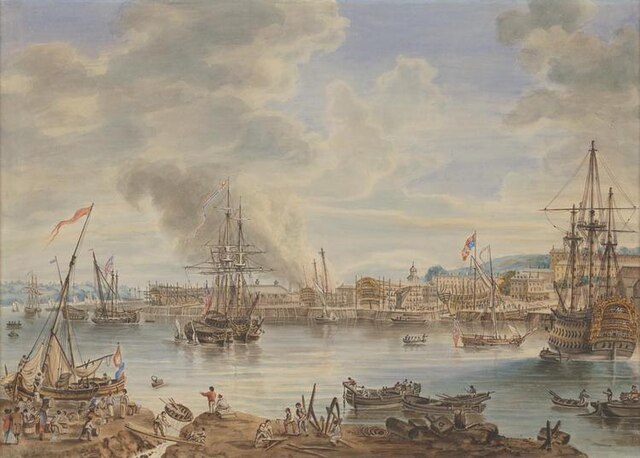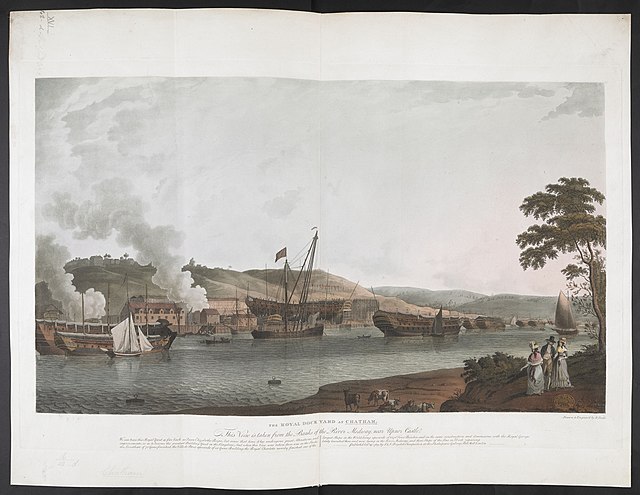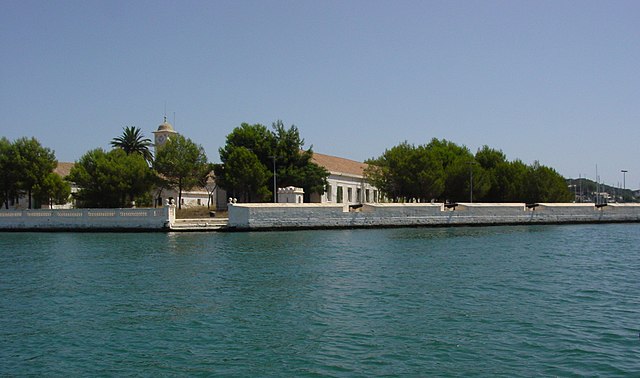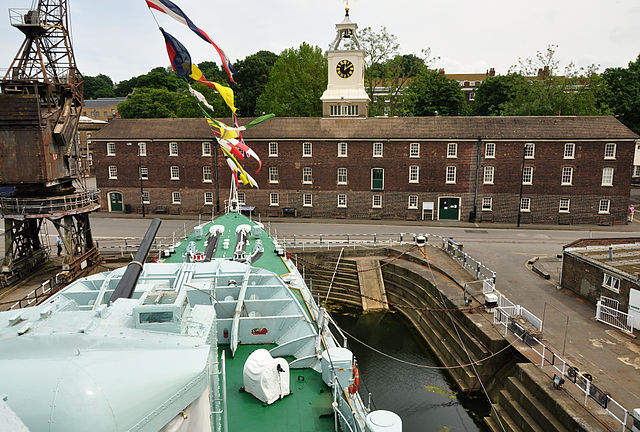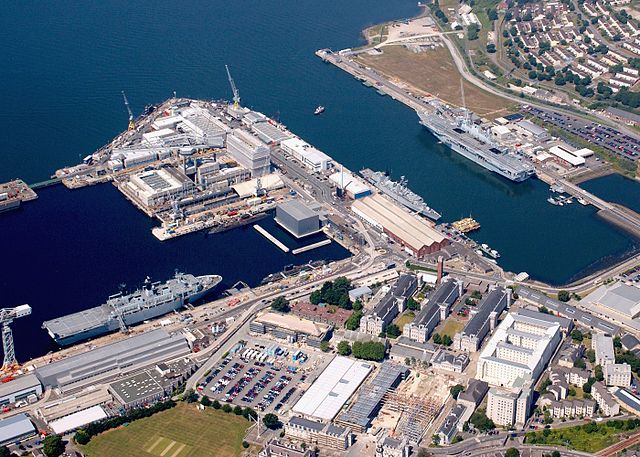Chatham Dockyard was a Royal Navy Dockyard located on the River Medway in Kent. Established in Chatham in the mid-16th century, the dockyard subsequently expanded into neighbouring Gillingham.
Chatham Dockyard in 1790 (by Nicholas Pocock)
Looking from right to left (i.e. south to north) along the river bank can be seen: the two Anchor Wharf Storehouses (with the Rope House and associated buildings behind); two shipbuilding slips (between which can be seen the Commissioner's House with its large garden, beyond which is the Sail and Colour Loft); two dry docks (with Clock Tower Storehouse behind them, and the Officers' Terrace beyond); the old Smithery (later demolished); two more dry docks (beyond which can be seen the Masthouses and Mouldloft); further building slips (with the two Mast Ponds beyond them); and some Boat Houses (later demolished). In the distance (far left) St Mary's Island can be seen, and ships at anchor on Gillingham Reach. In the centre of the painting, beyond the walls of the Dockyard, is the town of Brompton and, to the right, Chatham Barracks.
The Dockyard as depicted by Robert Dodd in 1789
Engraving of "Chatham Dockyard from Fort Pitt" from Ireland's History of Kent, Vol. 4, 1831. Facing p. 349. Drawn by G. Sheppard, engraved by R. Roffe.
Royal Navy Dockyards were state-owned harbour facilities where ships of the Royal Navy were built, based, repaired and refitted. Until the mid-19th century the Royal Dockyards were the largest industrial complexes in Britain.
Portsmouth Royal Dockyard, founded 1496, still in service as a Naval Base.
Careening wharf and storehouses built by the Royal Navy in the 1760s, Illa Pinto, Port Mahon, Menorca.
18th-century storehouse, 19th-century dry dock and 20th-century warship preserved at Chatham
Barracks accommodation alongside No.5 Basin and the former coaling wharf at Devonport

